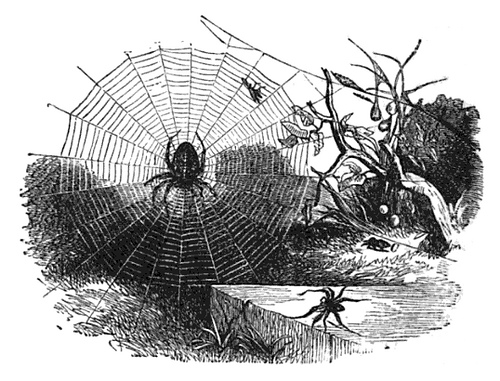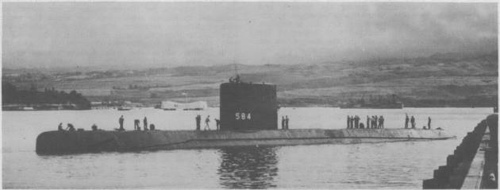What does this say?

Read it again.
What does this say?

Read it again.
An intelligent and very respectable gentleman, named Ebenezer Snell, who is still living, at the age of eighty and upwards, was in a corn-field with a negro on the 17th of June, 1776, in the township of Cumminton, Mass., one hundred and twenty-nine miles west of Bunker Hill by the course of the road, and at least one hundred in an air-line. Some time during the day, the negro was lying on the ground, and remarked to Ebenezer that there was war somewhere, for he could distinctly hear the cannonading. Ebenezer put his ear to the ground, and also heard the firing distinctly, and for a considerable time. He remembers the fact, which made a deep impression on his mind, as plainly as though it was yesterday.
— Charles Bombaugh, Facts and Fancies for the Curious From the Harvest-Fields of Literature, 1860

Lightning-prints are appearances sometimes found on the skin of men or animals that are struck by lightning, and are currently believed to be photographic representations of surrounding objects of scenery.
At Candelaria, in Cuba, in 1828, a young man was struck dead by lightning near a house, on one of the windows of which was nailed a horse-shoe; and the image of the horse-shoe was said to be distinctly printed upon the neck of the young man. On the 14th of November, 1830, lightning struck the Chateau Benatoniére, in Lavendée. At the time a lady happened to be seated on a chair in the salon, and on the back of her dress were printed minutely the ornaments on the back of the chair. In September, 1857, a peasant-girl, while herding a cow in the department of Seine-et-Marne, was overtaken by a thunder-storm. She took refuge under a tree, and the tree, the cow and herself were struck with lightning. The cow was killed, but she recovered, and on loosening her dress for the sake of respiring freely, she saw a picture of the cow upon her breast.
— Frank H. Stauffer, The Queer, the Quaint and the Quizzical, 1882

Let’s play a game. We’ll take turns bidding for a dollar bill. Both of us will have to pay our final bids, and the winner gets to keep the dollar.
Not surprisingly, the bidding will soon reach 99 cents. But then I’ll bid $1.00, giving up any hope of profit but getting at least the dollar for my trouble. And then you’ll bid $1.01, with the same idea. And so on indefinitely: First we were bidding for gain, but now we’re trying to minimize our losses.
It sounds absurd, but this game has led people to pay $5 for a $1 bill. Yale economist Martin Shubik invented it to show how an irrational decision can be reached by perfectly rational steps.
(Thanks, Cody.)
Niagara Falls paused on March 29, 1848.
An ice jam upstream stopped almost all water flow for 30 hours.
Maine science teacher Roger Bennatti once perched an unwrapped Twinkie on his blackboard to see how long it would take to go bad.
That was 30 years ago. “It’s rather brittle, but if you dusted it off, it’s probably still edible,” Bennatti told the Associated Press in 2004. “It never spoiled.”
(This is not a myth.)

If the weather is likely to become rainy, windy or in other respects disagreeable, spiders fix the terminating filaments, on which the whole web is sustained, unusually short. If the terminating filaments are made uncommonly long, the weather will be serene, and continue so, at least for ten or twelve days. If spiders be totally indolent, rain generally succeeds; their activity during rain is certain proof that it will be of short duration, and followed by fair and constant weather. Spiders usually make some alteration in their webs every twenty-four hours; if these changes take place between the hours of six and seven in the evening, they indicate a clear and pleasant night.
‘The clouds grow heavier over head —
The spider strengtheneth his web.’
— Frank H. Stauffer, The Queer, the Quaint and the Quizzical, 1882

In August 1960, the submarine U.S.S. Seadragon surfaced at the North Pole. During their visit, the crew laid out a softball diamond with the pitcher’s mound at the pole.
“If you hit a home run you circumnavigated the globe,” recalled crew member Alfred S. McLaren. “If you hit the ball into right field, it was across the international date line into tomorrow, and if the right fielder caught it, he threw it back into yesterday.”
Captain George P. Steele later claimed he hit a fly ball at 4 p.m. Wednesday that wasn’t caught until 4 a.m. Thursday.
See also A Freak of Navigation.
Ann Hodges was napping on her living room couch on Nov. 30, 1954, when a meteoroid crashed through the ceiling and smashed her radio. It struck her on the arm and hip, leaving her bruised but able to walk.
The meteor, it turned out, had made a fireball visible from three states as it descended on her Sylacauga, Ala., home. It’s now on display at the University of Alabama — it’s about the size of a grapefruit and weighs 12 pounds.
Lately some workmen employed in a quarry at Byker Hill, on splitting a huge block of free stone, nearly three tons weight, found a living toad in the middle of it; the cavity that contained the animal, to which there was no apparent passage from the outside, was the exact model of its figure, and was lined with a black substance suffused with moisture.
— Monthly Magazine, April 1812
(See also Entombed Animals.)